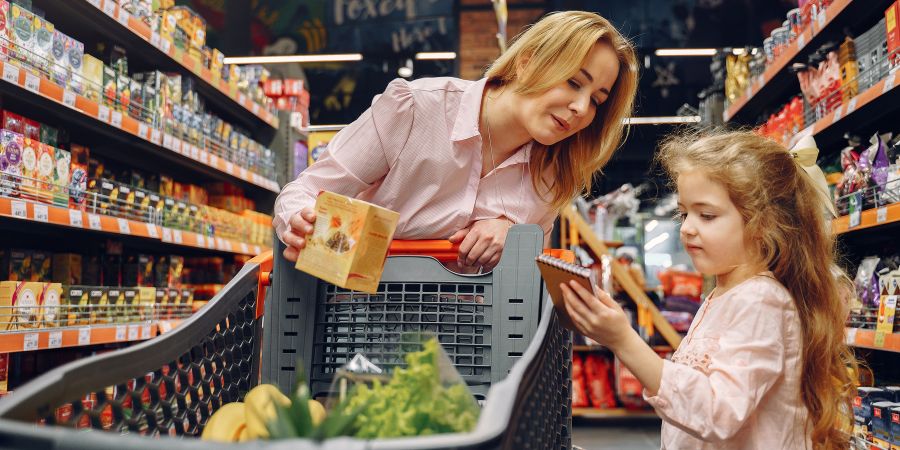The grocery chains in the US market have undergone a transformation in the last ten years, more than many economists expected. Classic supermarkets are grappling with the influence of discount models, online shopping, changes in customer behavior, and increasing costs. Online grocery sales were projected to hit $943 billion, making up slightly more than 40% of the overall US grocery sales in 2025. The top US grocery retailers that thrive in this difficult setting are the ones that keep their actual strength in the details. Here is how they do it.
This article also explores how grocery chains in the US are evolving, what drives them, and what grocery chains in the US mean for consumers and market competition.
Strategy 1: Data-Driven Customer Engagement and Personalisation
One of the lesser-discussed strengths of the primary grocery chains in the US lies in how they use data from loyalty programmes and digital interactions. Having first-party data means making smarter offers, improving recommendations, and engaging shoppers in a way that feels more than just “we have a sale today.” Researchers for US supermarket chains found that chains which manage customer data well and integrate mobile apps or loyalty platforms create a more connected shopping experience.
Imagine a shopper who routinely buys Greek yoghurt and berries. A chain using that behavioural data can send a targeted offer for a new flavoured yoghurt or pair with a seasonal fruit special. That relevance not only makes the shopper feel seen, it increases the basket size and builds repeat visits. For example, the usage of digital coupons and mobile app integrations is now far more important than traditional paper inserts. Major grocery chains in the US and what drives them is often reflected in these practices.
Strategy 2: Optimizing Supply Chain, Inventory and Store Operations
It is tempting to think the grocery business is all about shelves and checkout lines. But the most successful chains are doing heavy work behind the scenes. They focus on supply chain efficiency, real-time inventory management, avoiding waste, and ensuring stock availability. For example, a key factor is tracking perishables closely, knowing when items are moving slowly and adjusting orders accordingly. Comparison of US grocery chains and regional supermarket brands shows that attention to inventory management is a critical differentiator.
Consider this: a chain that tracks which fresh produce items are underperforming, cuts orders, speeds up delivery from warehouses, and rotates stock will reduce shrink and thereby improve margins. That is not flashy, but it is essential. Also, chain organisations investing in technology across their value chain (from warehouse to shelf) outperform slower competitors by 2% to 5% in earnings before interest and tax (EBIT). In real life this shows up as fewer empty shelves, fresher produce, and a consistent store look everywhere. For the shopper it feels reliable. For the chain it turns operational excellence into competitive advantage.
Strategy 3: Smart Private-Label and Pricing Models
Pricing is always front of mind for shoppers, especially in grocery, and the chains that win understand how to mix everyday low prices with smart private-label offerings. Retail strategy literature shows that managing the blend of national brands, private label (store brand) products, and pricing tiers can deliver margin and loyalty benefits.
Take private label: more primary grocery chains in the US are investing in their own brands because they yield higher margins and offer differentiation. For instance, shoppers often think the store brand is “good value” or “just as good as brand name”. That perception helps the chain build a unique value proposition. Meanwhile, some largest grocery chains America apply an everyday low price strategy (EDLP) for staples (milk, bread, eggs) and then create premium pricing for niche or organic items. While EDLP has trade-offs, it sends a strong signal to consumers.
What this means for the shopper: when you enter a store and you see “our brand” alternatives costing less than the big names but still delivering, you may feel smarter. For the chain: you build brand loyalty and margin flexibility. The right mix of pricing, private label, and promotional tactics is a hidden lever behind the scenes.
Strategy 4: Omnichannel Presence and Digital Convenience
Shoppers today expect convenience in every form: buy online, pick up at store; order via mobile app; have home delivery. Successful top US grocery retailers have realised that being purely physical is no longer enough. They build capabilities for digital ordering, curbside pickup, in-app offers, and personalised promotions. For example, the 2023 “State of Grocery in North America” study noted that about 85% of retailers were experimenting with new technologies to improve the customer experience. How grocery chains in the US are evolving is clearly evident here.
One big example: integrating mobile coupons, notifications when you are near a store, apps that remember your shopping list. According to marketing strategy articles, digital coupons and mobile app integration are now essential.
Here is a human analogy: think of your favourite coffee chain that lets you order via app, skip the queue, and get a loyalty reward. US supermarket chains are moving to that model. The physical store is still critical but the digital layer makes the experience smoother, faster, and tailored. The result: more visits, higher spend per trip, and a stronger connection with the shopper.
Strategy 5: Local Community Focus and Store Experience Differentiation
The final hidden strategy may look obvious but very few execute it well: creating local relevance and a store experience that matters. Largest grocery chains America invest in their communities, local sourcing, curate store assortments by region, and emphasise the shopping experience. In other words, they make each store feel like part of the neighbourhood rather than just “another big box”. Marketing guides emphasise “get local” as a strategy for grocery stores. Comparison of US grocery chains and regional supermarket brands highlights the importance of this approach.
For example, a chain may highlight local produce from a nearby farm, host in-store tastings, or tailor the fresh bakery items to regional taste. That effort makes shoppers feel the store understands them. Another dimension: employee training, store layout, fresh produce displays–these contribute to experience and perception. A chain known for clean, well-organised aisles and friendly staff builds an intangible reputation that influences loyalty.
The takeaway for chains: focus on the community and store as touch-points, not just distribution hubs. If a shopper leaves the store feeling good, they are more likely to come back. Experience matters as much as price.
Conclusion
When all these strategies combine, data-driven engagement, operational excellence, smart pricing/private label, seamless digital and local store experience, you get primary grocery chains in the US that stand out and sustain success in a crowded, challenging US market. Major grocery chains in the US and what drives them shows that success often lies in the details. You may not need to invent a new product; you need to weave together multiple smart habits. What grocery chains in the US mean for consumers and market competition is evident in loyalty, efficiency, and operational excellence.
If you are part of a retail business or simply interested in how big players think, consider this: treat your customer data as a human signal rather than a spreadsheet. Make your operations so solid your customer does not worry about shelf-stock or freshness. Price in a way that offers value and reinforces your brand. Build a digital layer that complements your physical-world promise. And make every local touch-point matter.
Ultimately these “hidden” strategies are not mysterious. They are consistent. They require discipline. They require integrating many pieces rather than one grand innovation. The best top US grocery retailers show what this really means in action. You can learn from them and apply the same principles in your context.



